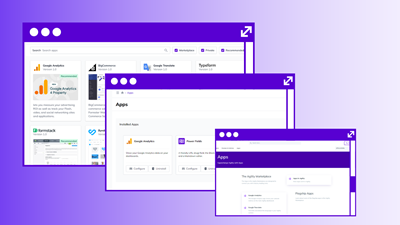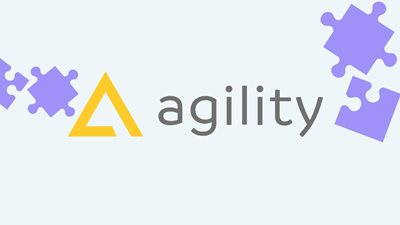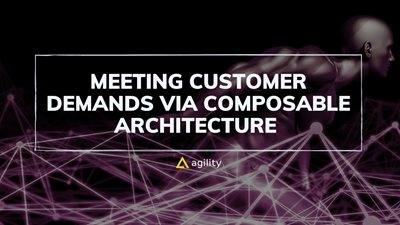Building a Composable Tech Stack: Advantages, Challenges and Steps


Businesses of all sizes rely on their technology stack to remain competitive in today's technology-driven environment. The technological stack comprises the hardware and software systems used to support business operations. However, it is getting harder to maintain a static tech stack as technology changes. Here, composability becomes essential. This article will define composability, define a tech stack, and explain how to construct a composable tech stack.
Composability: What is it?
A software development methodology called composability strongly emphasizes creating systems from separate, interchangeable parts. These parts can be readily mixed and reused to build new designs or modify existing ones without impairing their overall functionality. This strategy offers several advantages, such as a quicker time to market, more flexibility, and enhanced scalability.
What is a Tech Stack?
The software and hardware components that support business activities are called a "tech stack." The operating system, programming languages, database, and web server are all included. Various layers make up a tech stack, including the application, platform, and infrastructure. Each layer has several parts that come together to form an entire solution.
Composable Integrations
Software components that be easily integrated and reused to create or alter new systems are known as composable integrations. These integrations can involve everything from microservices and SaaS applications to open-source libraries and APIs. Composable integrations have a number of advantages, such as quicker development, more adaptability, and enhanced scalability.
Problems with Composability
Composability has many advantages, but it also has certain drawbacks. Making sure that components are compatible is one of the major concerns. Composable integrations may have various versions, dependencies, and interfaces since they originate from several sources. Because of this, incorporating them into a functioning system may be difficult. Additionally, a system becomes more complex and challenging to maintain and troubleshoot the more components it has.
Steps to Building a Composable Tech Stack
Building a composable tech stack requires careful planning and consideration. Here are some steps to help you create a composable tech stack:
Step 1: Define Your Requirements
Specifying your needs is the first step in creating a composable tech stack. What issues in business are you attempting to resolve? What features do you require? What standards do you have for performance? You may find the parts you need to assemble your tech stack by specifying your requirements.
Step 2: Research Available Components
Researching accessible components is the next step after defining your requirements. Open-source libraries, APIs, microservices, and SaaS programs are a few sources of composable integrations. You can choose the best components for your tech stack by researching the ones that are currently accessible.
Step 3: Evaluate Components
The next stage is to assess prospective components when they have been identified. This entails evaluating them for security, scalability, performance, and compatibility. Before incorporating components into your tech stack, it's crucial to evaluate them thoroughly.
Step 4: Integrate Components
Integrating components into your tech stack is the next step after identifying and assessing them. It's crucial to use standardized interfaces and protocols to make sure that the components work together.
Step 5: Establish Governance and Processes
Composability needs governance and processes to manage integrations, track data flows, and guarantee legal compliance. The structure that controls data and applications within the organization is referred to as governance. It consists of policies, processes, and guidelines that specify stakeholders' obligations regarding data management and compliance. The workflows and protocols used to manage data and applications are referred to as processes. They ought to be documented, repeatable, and standardized.
To establish governance and processes, the organization should define the following:
- Data ownership: Identify the business units that own specific data sets, who can access them, and what they can use them for.
- Data classification: Classify data based on sensitivity and determine access controls, retention, and destruction policies.
- Integration Governance: Establish processes for approving, testing, and deploying integrations. Also, define the roles and responsibilities of stakeholders involved in integrations.
- Compliance: Ensure the tech stack complies with relevant regulations, such as GDPR and CCPA.
Step 6: Monitor and Maintain Your Tech Stack
Once the composable tech stack is up and running, the organization should continuously monitor and measure its performance. This includes tracking data flows, measuring key performance indicators (KPIs), optimizing the stack, and monitoring integrations and KPIs.
To monitor and measure the composable tech stack, the organization should:
- Establish monitoring tools: Use monitoring tools to track performance metrics, such as uptime, latency, and error rates.
- Define KPIs: Define KPIs to measure the effectiveness of the tech stack in achieving business goals, such as revenue growth and customer engagement.
- Analyze data: Analyze data to identify patterns, trends, and insights that can inform optimization efforts.
- Optimize the tech stack: Use the insights gained from data analysis to optimize the tech stack, improve integrations, and enhance performance.
The Benefits of Composability:
Enhanced Agility: Composable architectures are more adaptable, enabling firms to take advantage of shifting consumer demands and market situations. By doing this, businesses can take advantage of new opportunities faster, stay one step ahead of the competition, and succeed more.
Greater Flexibility: Without being tied to a single vendor or technology stack, composable architectures allow businesses to use a wide range of best-of-breed tools and services to meet their unique needs. Due to their increased ability to innovate quickly, enhance workflows, and optimize procedures, organizations are better able to achieve their objectives.
Reduced Costs: By enabling organizations to utilize only the tools and services they require, composable architectures can drastically lower costs by removing the need for exorbitant licensing fees and maintenance expenses connected with conventional monolithic stacks. Composable architectures' flexibility and agility can also assist businesses in streamlining their workflows, lowering inefficiencies, and lowering operating expenses.
Improved Scalability: Composable architectures can be scaled up or down with ease, allowing businesses to react swiftly to changes in demand and support expansion. This makes it simpler for organizations to adapt to shifting client needs, lower downtime, and enhance the user experience.
How Agility's Content Platform Helps You Go Composable:
The Agility Content Platform is made to assist companies in creating composable tech stacks that offer the adaptability, agility, and scalability necessary to compete in the current fast-paced digital environment. The following are some of the main characteristics and advantages of Agility's content platform:
- Composable, Low-code Architecture: The modular architecture of Agility's Content Platform enables companies to select the tools and services they require and easily incorporate them into their current workflows. This modular approach offers the greatest flexibility, allowing businesses to add or remove modules as necessary without interfering with their existing workflows.
- API-First: The APIs in Agility's Content Platform make it simple for companies to combine their products with those of other companies. To avoid being tied to a single vendor or technology stack, this makes it simpler for businesses to utilize best-of-breed solutions that match their unique demands.
- Customizable Workflows: Agility's Content Platform allows businesses to customize their workflows to meet their needs. This enables companies to optimize processes, reduce inefficiencies, and improve the user experience.
- Cloud-Based: Agility's Content Platform is cloud-based, allowing businesses to scale up or down to accommodate changing demand. This makes it easier for companies to stay agile, respond quickly to new opportunities, and improve the overall user experience.
- Built-In Analytics: Agility's Content Platform features built-in analytics with Google, providing businesses with real-time insights into user behaviour and content performance. This makes it easier for companies to make data-driven decisions, optimize their content, and improve the overall user experience.
Building a composable IT stack is essential for companies trying to stay competitive in today's fast-paced digital landscape. Businesses may create a composable tech stack that offers the flexibility, agility, and scalability necessary to operate in today's constantly changing digital environment by utilizing a modular architecture, open APIs, customizable workflows, cloud-based infrastructure, and built-in analytics. With the tools and services required to construct a tech stack that is tailored to their requirements and aids in achieving their business objectives, Agility's Content Platform is made to help companies go composable.

About the Author
Harmonie is the Senior Marketing Manager at Agility CMS



